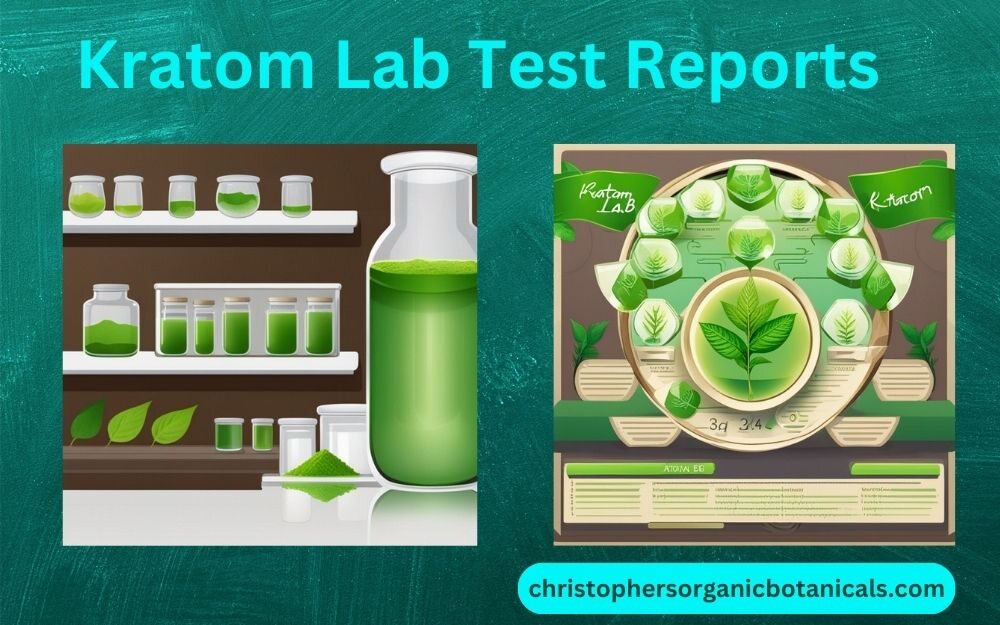What to Look for in Kratom Lab Test Report?
In recent years, Kratom has completely overtaken the market. Without question, people are making use of it for the positive traits it offers.
But with numerous options in the market, making the right decision can be challenging. How can one tell if this Kratom strain is high-quality and genuine? How can one tell if the kratom is working? This is where Kratom lab testing comes into play.
Before making the herb accessible, Kratom must undergo vigorous lab testing to ensure its quality. Take the time to study the kratom lab reports to make sure you are not being duped. It is an essential step that might prevent you from making poor choices.
You need to look at 6 key points before making a purchase. Let us guide you through it.
6 Important Things to Look at in Kratom Lab Test Reports
Here are 6 pointers for when the lab report is presented. Although it is impossible to eliminate all the harmful particles, there is a set threshold companies must follow. Learn about them to ensure you get your quality product.
1. Check for Laboratory’s Name & Reputation
The practice of conducting fake Kratom testing is widespread among laboratories. Thus, it is not a myth. However, there are a few ways to confirm the report’s accuracy.
First, search for the laboratory name and see if they are legitimate and accredited by some government organization. Search for the sample and laboratory ID next. You need to be able to track the testing to see if it is legitimate. These IDs are kept in place so you can see them and feel secure.
The testing method is another crucial aspect to pay attention to. Check to see if they are using modern testing equipment and up-to-date processes. The QR code is the last but not the least. Although it is not particularly significant, you can examine it to ensure the reports the company has posted on its websites match the laboratory.
Many individuals ignore these minute warnings and then complain about the product’s quality. Before purchasing Kratom, you should confirm that all the boxes have been checked.
2. Check the Test Date
This part is crucial as many people need to pay more attention to it. They observe that the lab is genuine, and they can track the sample ID, so they are good for now.
However, pause a moment to look at the test dates. It is to guarantee that the goods you are purchasing have been tested. This is especially true if they have just ordered new products. Look for the test date; if you cannot locate any, there is a good chance the Kratom has not been tested.
This practice is quite prevalent even among substantial vendors. As a result, be sure to check yourself. Purchasing untested Kratom is never a clever idea because it can have unfavorable outcomes.
3. Alkaloid Concentration
The lab tests additionally check on the alkaloid concentration present in the Kratom plant. The alkaloid concentration fluctuates and is influenced by several elements, including the soil, surroundings, location, and the farmer’s skill. Each alkaloid has a unique impact that varies in strength.
Mitragynine and 7 Hydroxy Mitragynine are the major substances that laboratories test. When mixed with other ingredients, these alkaloids control the substance’s potency and intensity. High-performance liquid chromatography is a technique the lab employs to determine the precise. Therefore, look at them before buying an item.
4. Pathogens
There is always a risk of consuming pathogens that can lead to bacterial infection. Pathogens are infectious agents that could fall into bacterial and viral groups. Simply put, they harm the host to survive.
The lab tests investigate these pathogens as well.
Make sure to peek at the pathogen list and ensure that the following microbes are screened:
- E. Coli
- Salmonella
- Mold
- Yeast
It is a necessary step to ensure that the product’s quality remains intact and that it is acceptable to consume it. Yeast and mold testing has just lately begun. It was since some people were allergic to these things. To ensure that it is safe for everyone, look at this section.
5. Heavy Metals
In the context of lab testing, heavy metals are also scrutinized. The tests confirm that these metals remain within safe limits, despite their persistent presence in the environment.
The metals that are checked in the testing are:
- Mercury (Hg)
- Lead (Pb)
- Cadmium (Cd)
- Arsenic (As)
A well-known technique called Inductively Coupled Plasma Mass Spectrometry is used for this purpose. Many sophisticated machines and methods are employed to trace these metals. The process mentioned above is the most prominent one.
Remember, removing all the traces of these metals is impossible. We can consume these metals in limited amounts. So, there is no need to panic. All these insights are given in the lab report, so make sure you keep an eye on them.
6. Adulterants/ Identity
Adulterants are compounds not naturally present in Kratom but are introduced by vendors. For instance, Mitragynine is present in Kratom; some add it artificially to increase its potency.
Phenethylamine is a compound that should never be found in Kratom due to its potential risks and adverse effects. Phenethylamine is a naturally occurring compound found in various plants and animals, including humans. It acts as a neurotransmitter and plays a role in regulating mood, cognition, and behavior.
However, when present in Kratom, Phenethylamine can pose significant health hazards. One of the main concerns is its potential to interact with other substances found in Kratom, such as alkaloids. These interactions can lead to unpredictable and potentially dangerous effects on the central nervous system.
Moreover, Phenethylamine has been associated with various side effects when consumed in high amounts or in combination with certain medications. These side effects may include increased heart rate, elevated blood pressure, anxiety, agitation, and even hallucinations. Individuals with pre-existing cardiovascular conditions or mental health disorders may be particularly vulnerable to these adverse effects.
Furthermore, the presence of Adulterants in Kratom can raise concerns about the quality and purity of the product. It suggests that the Kratom may have been contaminated or adulterated with other substances, which can further increase the risks associated with its consumption.
To ensure the safety and integrity of Kratom products, it is crucial for manufacturers and suppliers to adhere to strict quality control measures. Identity of the mitragyna speciosa product should be present in testing.
In conclusion, the presence of adulterants in Kratom should be strictly avoided due to its potential risks and adverse effects. Consumers should be cautious when purchasing Kratom products and opt for reputable sources that prioritize quality control and safety.
Ingredients other than Kratom are occasionally mixed with Kratom. This not only cancels out its advantages but is also harmful to your body. This is why lab testing is necessary to ensure the standards are met. You must buy from someone whose lab reports are valid, and a third party has taken the testing into their hands.
Final Words
Lab testing plays a crucial role in ensuring that the Kratom product being purchased is of the highest potency and quality. It serves as a quality control measure that helps to verify the purity and effectiveness of the product. By subjecting the Kratom to rigorous laboratory testing, manufacturers can identify any potential contaminants, adulterants, or impurities that may be present.
When consumers are not aware of the importance of lab testing, they may be more prone to making poor impulse purchases. Without considering the factors mentioned above, such as potency and quality, individuals may be tempted to buy Kratom products solely based on marketing claims, price or attractive packaging. However, this can be risky as it may lead to purchasing low-quality or ineffective products that do not deliver the desired benefits.
Consuming high-quality Kratom products is vital if one wishes to fully experience the advantages associated with this natural substance. High-quality Kratom is more likely to provide the desired effects, such as relaxation, or increased energy. On the other hand, low-quality or adulterated Kratom may not deliver the desired results and could potentially pose health risks.
Therefore, it is important for consumers to be mindful of the significance of lab testing when purchasing Kratom. By choosing products that have undergone thorough lab testing, individuals can have confidence in the quality and potency of the Kratom they are consuming. This ensures that they are getting the most out of their Kratom experience and minimizing any potential risks associated with subpar products.
In conclusion, lab testing serves as a crucial step in guaranteeing the quality and potency of Kratom products. By considering the elements mentioned above and avoiding impulse purchases, individuals can make informed decisions and choose high-quality Kratom that will provide the desired benefits. So, it is advisable to keep all these factors in mind when purchasing Kratom in order to have a positive and safe experience.






0 Comments